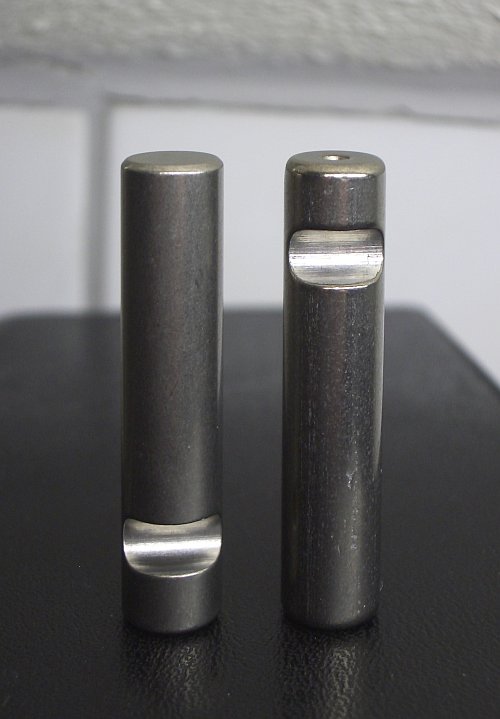


Titanium
 Titanium is a grey metal, which is very corrosion
resistant in the massive state. It is used in jewelry for this purpose. It also
is used in metal alloys, because of its relatively low specific weight, combined
with the constructional strength.
Titanium is a grey metal, which is very corrosion
resistant in the massive state. It is used in jewelry for this purpose. It also
is used in metal alloys, because of its relatively low specific weight, combined
with the constructional strength.
When the metal is finely powdered, then it becomes more reactive. Once the fine powder is ignited, it can continue burning with a brilliant flame. For this reason, titanium metal sometimes is used in pyrotechnic mixtures.
For the home chemist, powdered titanium is quite an interesting compound, not only because of pyrotechnic applications. It can be used to explore the interesting and remarkable aqueous chemistry of titanium.
Powdered titanium can be obtained from chemical supply houses and from pyrotechnic supply houses. Sometimes it also is available on eBay.
![]()
Titanium can have the +2, +3 and +4 oxidation state in its compounds. The +2 oxidation state can only exist with rigorous exclusion of air and moisture. With water, a compound with titanium in its +2 oxidation state, quickly reacts, forming hydrogen and a compound of titanium in its +3 oxidation state. For the home chemist, only oxidation states +3 and +4 are accessible.
Compounds of titanium are hard to obtain for the general public. If one wants to perform experiments with titanium, then the metal should be used as a starting point. The only compound available to the general public without too much difficulty is calcined titanium dioxide, TiO2, also called rutile. This is available from ceramics and pottery suppliers. Calcined titanium dioxide is a white powder, which is remarkably inert. It is almost impossible for the home chemist to dissolve some rutile and getting soluble titanium compounds with this. Even concentrated hot acids and alkalies are not capable of dissolving this solid at an acceptable rate. Because of its inertness, rutile is not interesting for the home chemist.
When the metal is available, then titanium in its +3 oxidation state can be produced by dissolving the metal in concentrated hydrochloric acid. This reaction proceeds very slowly, but in a day or two, a sufficient amount of titanium is dissolved for performing interesting experiments. A nice experiment, showing the formation of a peroxo-complex of titanium is given here.
Titanium in its +3 oxidation state has beautiful deep violet/indigo color at high concentration, it has a violet color at lower concentration. It is a fairly strong reductor. In acidic environments it is easily oxidized to a colorless species with titanium in the +4 oxidation state. This colorless species is not plain hydrated Ti 4+, but either hydrated TiO2+ or Ti(OH)22+.
Titanium in its +4 oxidation state is very sensitive to hydrolysis. Only when a solution, containing titanium in its +4 oxidation state, is kept really acidic, then it remains clear. Otherwise a white precipitate of hydrous TiO2 is formed. On acidification this precipitate dissolves again. However, when the precipitate is allowed to stand, then it slowly 'ages' making it much more inert, just like the commercially available rutile. When a freshly prepared precipitate of hydrous titanium dioxide is put in an alkaline solution, then it redissolves, forming titanate (IV) anions. Hence, titanium in its +4 oxidation state can be regarded amphoteric.